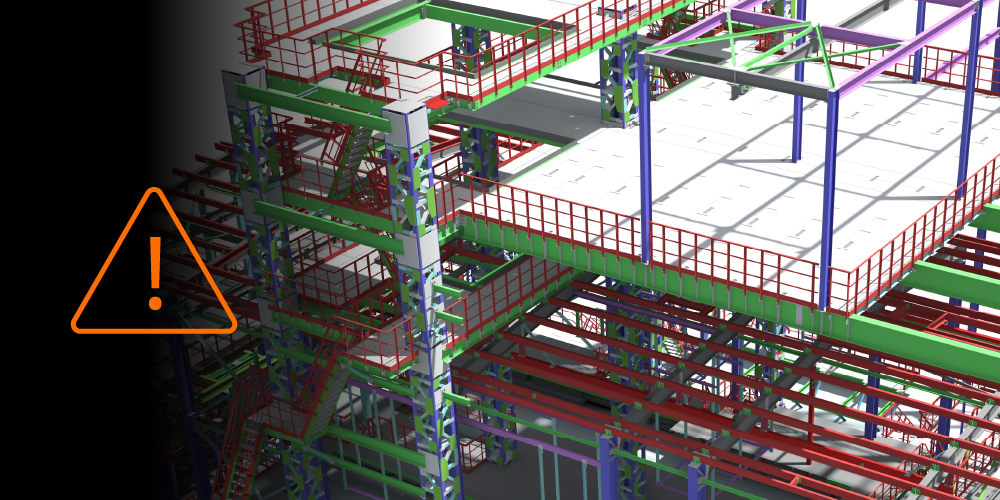Related Articles
— 9 min read
From Legacy Job-Costing Systems to Next-Gen Tools: Delivering Gains for People, Processes and Profits Across Construction


Last Updated Nov 26, 2025

Shauna Hurley
Shauna is never short of questions when it comes to construction, tech and science. A professional writer, researcher and podcast producer, she loves sitting down with industry insiders for in-depth interviews that uncover the latest developments, debates and emerging trends. Having worked with organisations like Microsoft and the European Bank of Reconstruction, Shauna joined Procore to explore the complex issues facing construction and share fresh, research-rich insights that help professionals navigate a rapidly evolving industry.
Last Updated Nov 26, 2025

In this three-part series, Quantity Surveyor turned Financial Solutions Specialist Clint Burgess uncovers the real-world gains for people, processes, and profits when businesses move from legacy to next-generation Enterprise Resource Planning (ERP) and Job Costing systems.
Technology is transforming construction, yet many businesses still rely on systems that were never designed for the pace, complexity or connectivity of today’s projects.
That pressure on people, processes, and profits is something Clint Burgess, a Quantity Surveyor turned Financial Solutions Specialist, sees every day.
“When it comes to Construction Job Costing and ERPs, systems built in the 1990s for a world of manual processes still dominate,” Clint explains. “They handle the basics, but the bigger problem is clear: data stays trapped in silos, disconnected from the tools now driving automation, real-time insight and collaboration from site to boardroom.”
“I’ve spent more than a decade in cost management — on site, in the office and working with finance teams, and now helping businesses gain real advantages by moving beyond legacy systems. Everywhere I go now, the story’s the same: capable people spending unavoidable hours on admin because their systems can’t deliver with the speed, accuracy, visibility or flexibility projects demand.”
“The good news is that next-generation ERP systems are genuine game-changers on this front. They unlock data, connect teams, and free people to focus on higher-value work. The results speak for themselves: faster, more accurate reporting, lower risk, and measurable time and cost savings across every project.”
Table of contents
What’s the Difference — and Why It Matters
Legacy systems have long locked businesses into a single, rigid platform. Next-generation ERPs are designed for connection, not confinement. They link field and finance data so information moves in real time — from variations and timesheets to claims and forecasts. The result? Project teams, finance and leadership see the same live picture, not separate reports assembled manually weeks later.
“With legacy systems, you get what I call the field-to-office disconnect,” Clint explains. “Costs are captured late, approvals get stuck in inboxes, and by the time the data reaches finance, it’s already out of date.”
“Next-gen systems open up both your data and your environment. Field updates flow straight into financials, so decisions and forecasts can be built on real-time information from across the business.”
This connected approach removes the financial blind spots that can often lead to cash-flow strain and margin pressure. Instead of being tied to one rigid platform, businesses can connect the right combination of tools for job costing, forecasting and reporting — all within a secure, cloud-based environment that’s accessible from site, office or boardroom.
These flexible options reduce inefficiencies and, just as importantly, position businesses to take advantage of what’s next — AI-driven efficiency and predictive analytics.
Legacy systems were never designed to connect with the ecosystem of cloud-based tools shaping construction today, let alone tomorrow. That’s why more businesses are recognising there’s no real alternative to moving toward integrated, next-generation systems. The pressing need is to do it sooner rather than later.
“There’s another reason change can’t wait,” Clint says. “And that’s the widening gap between workforce expectations and outdated technology. Procore’s Future of Construction Report found that 78% of next-generation construction professionals say access to modern, cloud-based tools will influence where they choose to work.
“For construction leaders, that makes technology not just a productivity lever — but a decisive factor in attracting, engaging and retaining talent in an increasingly competitive market.”
Inside the Day-to-Day Reality: Legacy System Problems vs Next-Gen Solutions Across Teams
Even the best teams can only work as fast as their systems allow. Across the industry, talented people in diverse roles are forced to spend too much time compensating for job costing and ERP systems that no longer keep pace.
“When systems don’t reflect or support the way projects actually run, people have no alternative but to plug the gaps through time-consuming manual processes,” Clint says.
“I see it every day — teams wrangling multiple spreadsheets, re-keying data and navigating endless email trails. The job gets done, but progress slows, it’s much harder to mitigate risk, and confidence in the numbers erodes. All that extra effort also comes at a cost — time, risk and lost trust in the data businesses rely on for financial control and decision-making.”
To illustrate how this plays out on the ground, let’s look at two fictional companies based on real industry experience — we'll call them "Legacy Co" and "Next-Gen Co" — each running the same type of projects but with very different systems.
These comparisons are designed to show what Clint observes across the industry: how legacy tools slow progress, and how connected platforms unlock performance.
Contract Administrators — Drowning in Admin vs Managing the Job
Contract Administrators sit at the intersection of compliance, communication and cost control — yet legacy platforms that should make this work easier often do the opposite.
“Contract Administrators are some of the hardest-working people in the business,” Clint says. “They want to focus on managing risk, compliance, and driving up margins — doing the job properly — not spending half their week buried in spreadsheets and emails. Legacy systems force them into admin mode. Next-gen tools remove that burden and let them focus on the work that truly adds value like mitigating risk and driving higher margins.”
In legacy systems, approvals often happen via emails or PDFs, making it easy for steps to be missed or sign-offs to fall outside company policy. Over time, that creates real audit, compliance and financial risk.
In next-generation systems, compliance is built into the workflow itself. Approvals are automatically routed to the right person and tracked end-to-end, ensuring governance and leaving a complete audit trail.
| Task | Legacy Co | Next-Gen Co |
|---|---|---|
| Variation Tracking | ✖ Side spreadsheets, multiple versions, surprises | ✔ Early forecasts, one live variation log for all |
| Approvals | ✖ Email chains over days/weeks | ✔ In-workflow approvals with status |
| Compliance | ✖ Manual, reliant on trust | ✔ Automated routing + full audit trail |
| Month-End | ✖ “Where’s VO #47?” scramble | ✔ Built-in audit trail, instant retrieval |
| Time Cost | ✖ 10–12 hrs/week manual entry | ✔ 2–3 hrs ≈ 75 % saving |
What This Looks Like in Practice
At Legacy Co, the Contracts Administrator is buried in admin; manually collecting evidence associated with variations and manually chasing approvals.
At Next-Gen Co,the Contract Administrator focuses on high value activities that drive margins up.
Next-Gen Benefits
- 30+ hours back per month for contract administrators
- Lower compliance risk with a live audit trail
- More time managing the job, less time chasing paperwork
Commercial Managers — Blind Spots vs Portfolio Clarity
Commercial Managers oversee the financial performance of multiple projects, often across entire regions. But legacy systems make that job harder than it needs to be, scattering key data across spreadsheets and siloed reports.
“Commercial Managers are highly accountable for the numbers,” Clint says. “The problem isn’t capability, it’s access. They’re trying to pull insights from disconnected systems that can’t keep up with how projects actually run. By the time the data’s compiled, it’s already out of date. That makes confident decision-making difficult at every level.”
Next-generation platforms connect project and finance data in one environment, giving Commercial Managers a live, accurate view across every project. Reports, forecasts, and approvals draw from the same real-time source, removing the need for manual reconciliation and ensuring consistency across the business.
“When your portfolio data is connected and current,” Clint adds, “you can shift from chasing spreadsheets to managing outcomes. That clarity builds confidence right through to leadership.”
| Task | Legacy Co | Next-Gen Co |
|---|---|---|
| Budget Reconciliation | ✖ Manual match-ups | ✔ Automatic reconciliation across projects |
| Team Performance Management | ✖ Subjective | ✔ Data Driven |
| Risk and Compliance Management | ✖ Reactive, manual | ✔ Proactive, systematic |
| Portfolio Reporting | ✖ Two days across 15 sources | ✔ 2hrs with dashboard with drill-down |
| Time Cost | ✖ 3–4 days/month reconciling and reporting | ✔ 2–3 hrs ≈ 95 % saving |
What This Looks Like in Practice
At Next-Gen Co, the commercial manager logs into a live dashboard showing portfolio-wide performance — every project’s costs, commitments and margin projections in real time. They can drill into anomalies instantly and share data directly with finance and leadership.
At Legacy Co, that same visibility takes days of manual consolidation across spreadsheets and systems.
Next-Gen Benefits
- Days saved each month on reconciliation and reporting
- Consistent, portfolio-wide visibility and compliance
- Confident, timely communication with leadership
Leadership — From Delayed Insights to Data-Driven Decisions
“Leadership relies on the numbers that flow up through the business,” Clint says. “When teams are stuck reconciling data from disconnected systems, that confidence erodes. But when information moves systematically from site to finance to the boardroom, decisions become clearer, faster and better aligned.”
Next-generation ERP platforms connect teams in real time. Finance and field data sync automatically, creating a live, accurate view of project and portfolio performance. Instead of waiting for reports to be finalised, leadership teams can see exactly what’s happening — and what’s ahead — at any point in the cycle.
“With connected systems, leaders don’t have to question the data,” Clint adds. “They can focus on what really matters — steering performance, managing risk and planning for growth.”
| Challenge | Legacy Co | Next-Gen Co |
|---|---|---|
| Report Timing | ✖ Too long after month-end | ✔ Live dashboards anytime |
| Data Consistency | ✖ Conflicting versions | ✔ Single source of truth |
| Strategy Meetings | ✖ Reconciliation sessions | ✔ Forward-looking decisions |
| Decision Speed | ✖ Waiting for “final” data | ✔ Immediate visibility for action |
| Strategic Impact | ✖ Lost agility | ✔ Sharper strategy and competitive edge |
What This Looks Like in Practice
At Legacy Co, directors review performance a week after month-end, debating which figures are final.
At Next-Gen Co, they open a live dashboard before the meeting starts, seeing current margins, forecasts, and risks in real time — and spend their time deciding what to do next with confidence, not reconciling data.
Next-Gen Benefits
- Immediate visibility for strategic decisions
- Greater confidence in the numbers
- A stronger foundation for predictive analytics and AI-driven insights
Why This Matters Now
“Legacy systems did the job they were built to do decades ago,” Clint says. “But today, they’re slowing construction down at the very moment the industry needs speed, accuracy, and agility the most.”
“We know that complex projects, tighter margins, and growing skills shortages all point to the same conclusion — construction professionals need better, fit-for-purpose systems, not more spreadsheets.”
“In my own work, I talk to so many teams and business leaders that find making the move a daunting prospect — but they’re not alone,” Clint adds.
“It’s absolutely achievable with a structured approach and the right support. Those who start now will gain a real advantage: saving time, reducing risk, improving visibility, and capitalising on everything the latest tech tools have to offer — now and into the future."
Next up: In Part 2 — From Workarounds to What’s Next, Clint uncovers three key legacy ERP issues holding construction businesses back — and shows how next-generation platforms resolve them for measurable gains in time, money and confidence.
this is part of the series
The Next Generation of Job-Costing
Categories:
Written by


Shauna Hurley
Shauna is never short of questions when it comes to construction, tech and science. A professional writer, researcher and podcast producer, she loves sitting down with industry insiders for in-depth interviews that uncover the latest developments, debates and emerging trends. Having worked with organisations like Microsoft and the European Bank of Reconstruction, Shauna joined Procore to explore the complex issues facing construction and share fresh, research-rich insights that help professionals navigate a rapidly evolving industry.
View profileExplore more helpful resources

Managing Direct Costs in Construction: How Visibility Drives Profitability
Direct costs define the financial reality of every construction project. They cover the labour, materials, and equipment that drive delivery and determine profitability. But even the best-planned budgets can shift...

BIM Clash Detection: Reducing Rework, Delays, and Risk in Construction
Design clashes can be a significant hidden cost in construction, as each conflict between systems risks expensive rework, project delays, and reduced margins. BIM clash detection empowers teams to identify...

Next-Gen Job-Costing: Ready to Move? 5 Things to Consider Before You Get Started
In this three-part series, Quantity Surveyor turned Financial Solutions Specialist Clint Burgess uncovers the real-world gains for people, processes, and profits when businesses move from legacy to next-generation Enterprise Resource...

From Workarounds to Workflow: Solving Construction’s Legacy Job-Costing System Challenges with Next-Gen Tools
In this three-part series, Quantity Surveyor turned Financial Solutions Specialist Clint Burgess uncovers the real-world gains for people, processes, and profits when businesses move from legacy to next-generation Enterprise Resource...
